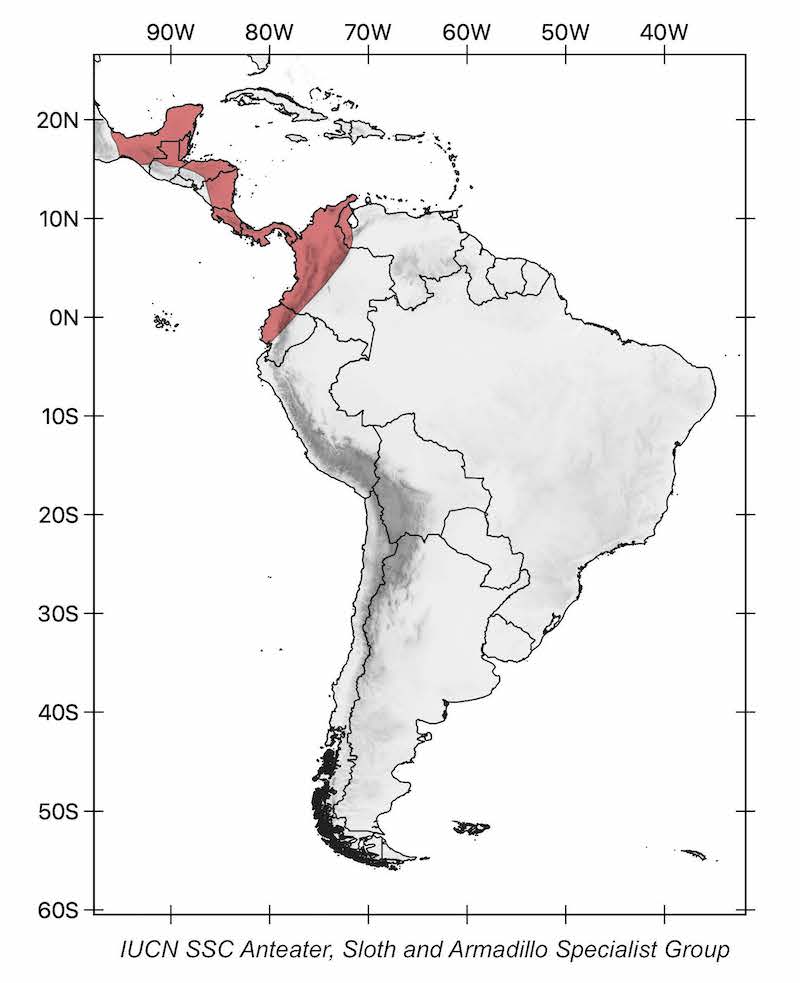Central American silky anteater
(Cyclopes dorsalis)
other common names
Central American pygmy anteater
Taxonomy
Order: Pilosa
Family: Cyclopedidae


description
Until recently, it was thought that there was only a single species of silky anteaters. However, a 10-year long investigation by Miranda et al. (2018) provided evidence that there are actually seven species of Cyclopes.
The Central American silky anteater has a head-body length of 18.5–21.5 cm, a tail of 17–22.5 cm length, and it weighs 155–275 grams. Its color is quite different from the other Cyclopes species: its general color is yellowish-brown, with the tail and limbs being more yellowish. There is no dorsal stripe, but a strongly developed and extensive sternal stripe.

range
This silky anteater occurs from southern Mexico through the Atlantic slope of Honduras to the inter-Andean valleys of Colombia and along the Pacific coast of Colombia and Ecuador.

HaBITAT and ECOLOGy
This species inhabits mangrove swamps and tropical rainforests. It has arboreal and nocturnal habits. At Barro Colorado Island in Panama, the home range of a male was 11 hectares, and the average home range of four females was 2.9 hectares.

diet
No information is available on the diet of this species, but it is presumably an opportunistic insectivore that mainly feeds on ants.

reproduction
Gestation length is 120–150 days; a mother with her half-grown offspring was recorded in February.

threats
The threats to this species are unknown. It is probably affected by habitat loss, especially due to the degradation of mangroves.

Population trend

conservation status
Cyclopes dorsalis is listed as Least Concern in view of its wide distribution, presumed large population, its occurrence in a number of protected areas, and because it is unlikely to be declining fast enough to qualify for listing in a threatened category.

curious facts
Three former subspecies of Cyclopes didactylus have been synonymized for the description of this species: Cyclopes didactylus eva, Cyclopes didactylus mexicana, and Cyclopes didactylus dorsalis. The species kept the scientific name of the latter because it was the oldest of the three subspecies descriptions. This standard is used in the International Code of Zoological Nomenclature, a widely accepted convention in zoology that rules the formal scientific naming of animals.